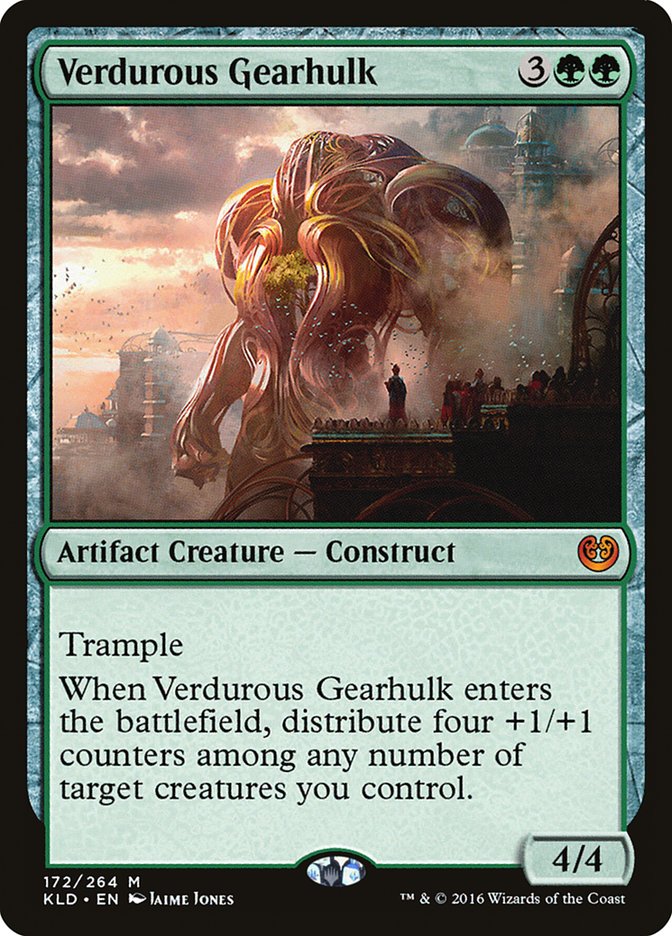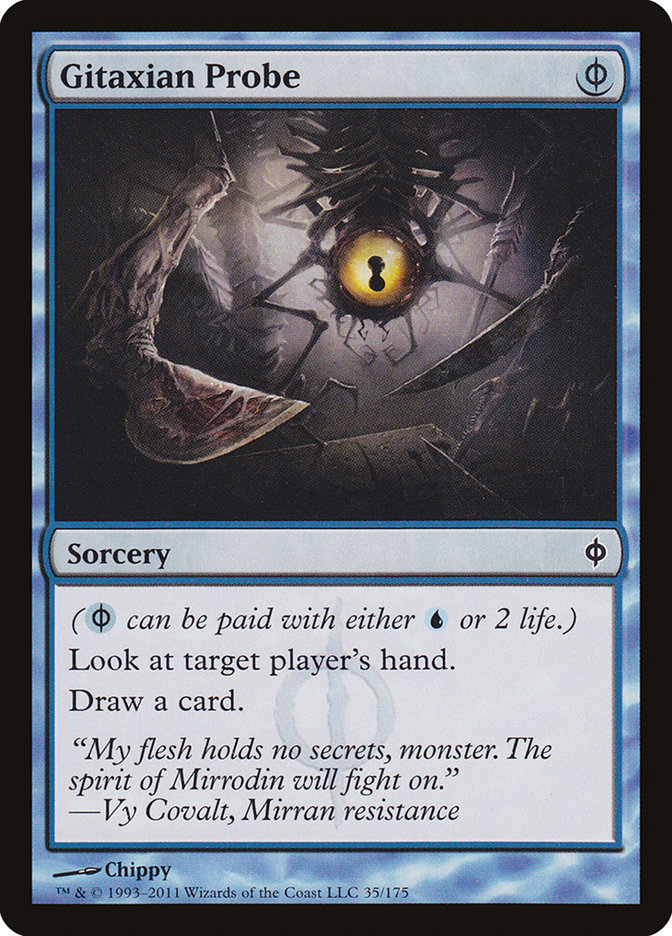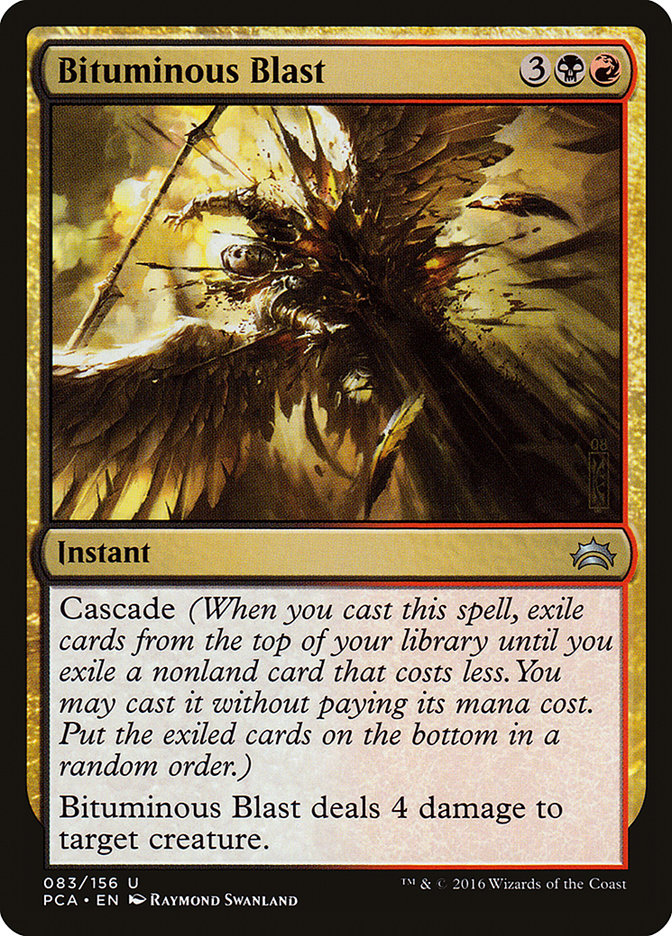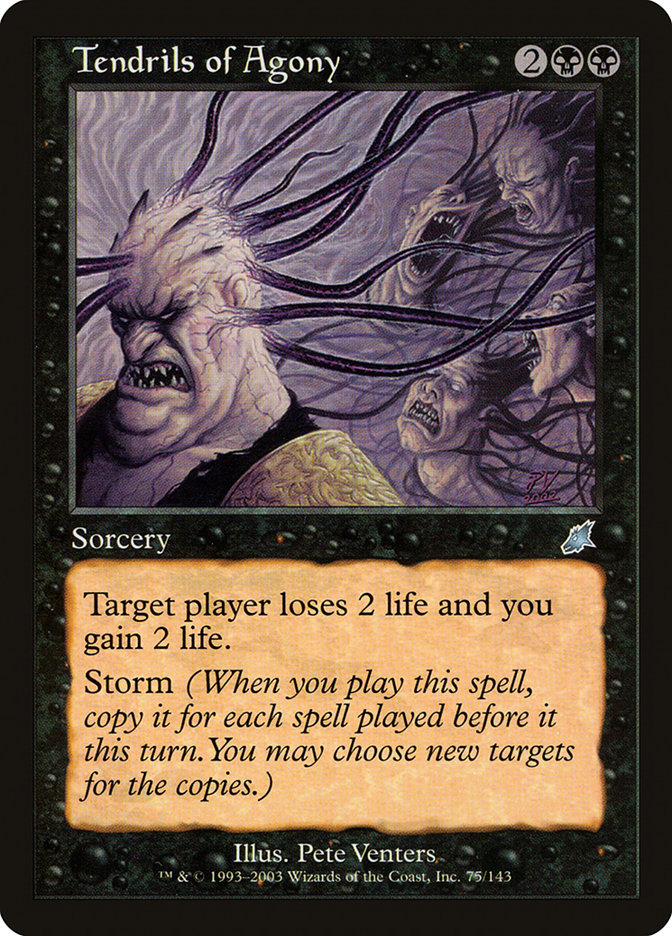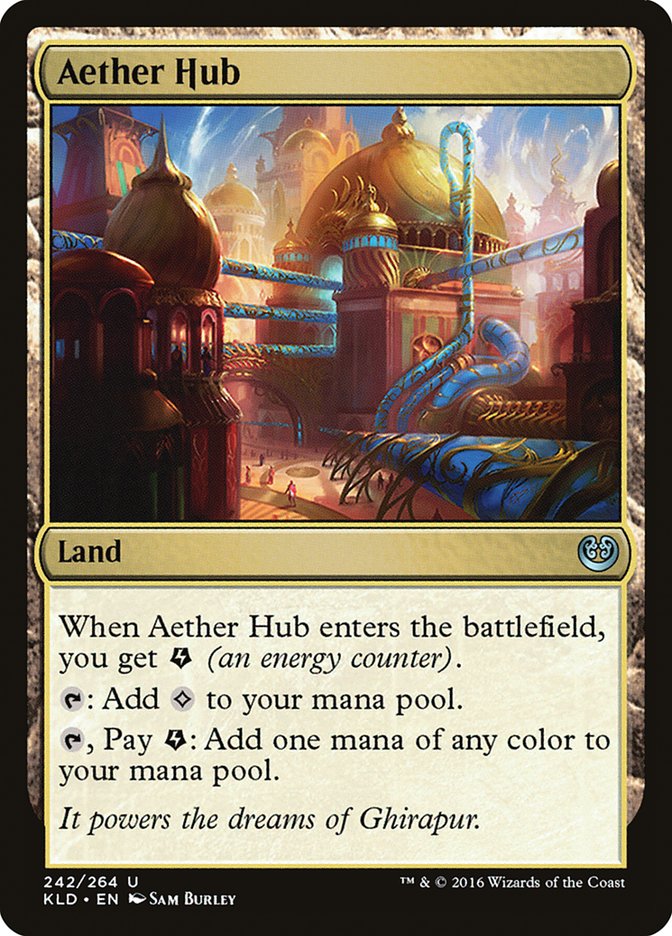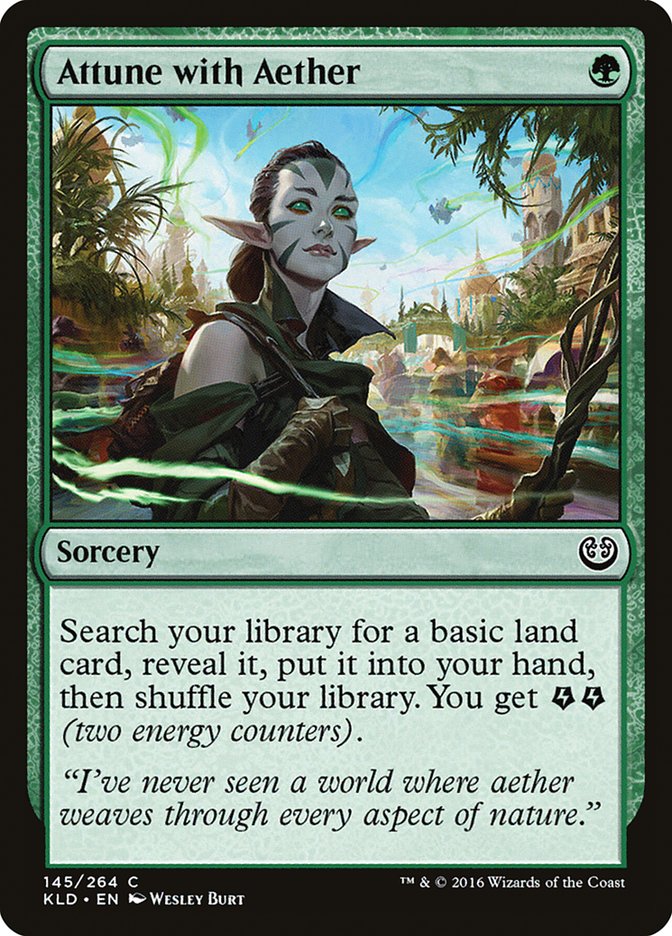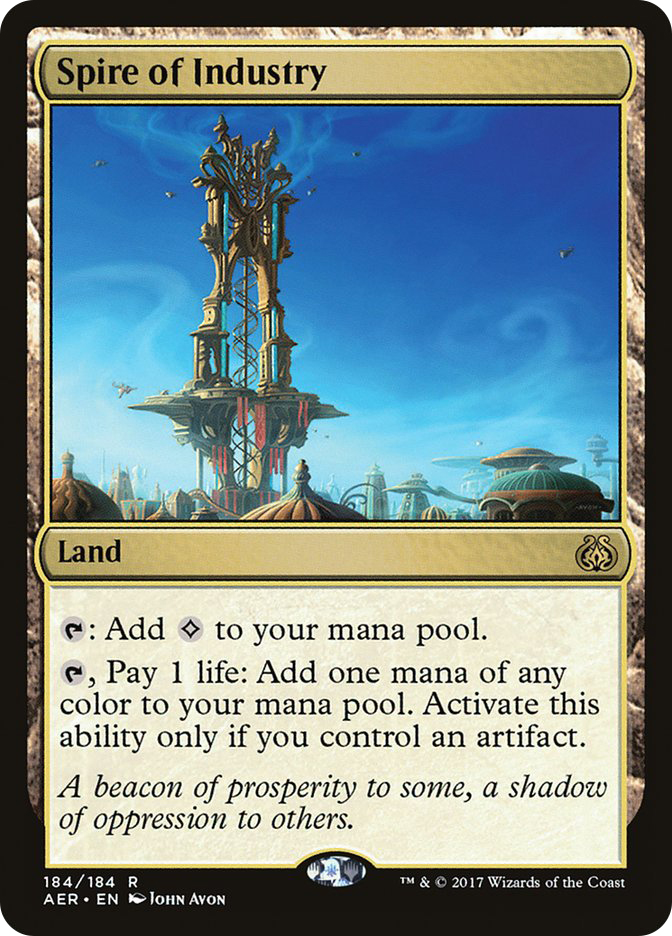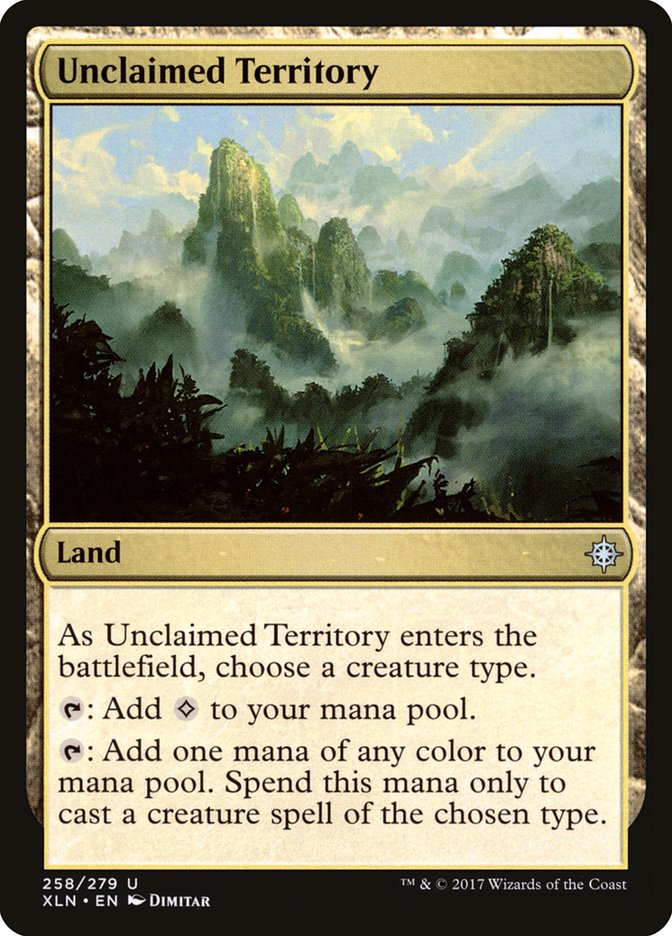
The World Championship brought plenty of great storylines, highlighted by an incredibly deserving champion in William Jensen. Unfortunately, the change to having Worlds being positioned shortly after the release of a new set backfired, as this may have been the least substantial rotation in Magic’s history.
Before Ixalan, Temur Energy and Ramunap Red were the top decks in the format, and despite few new additions they remain the top decks after Ixalan. U/B Control was a new arrival, seemingly supplanting U/W Approach as the control deck of choice but that’s hardly a groundbreaking shift, and it was in large part to gain access to Fatal Push and The Scarab God, although Vraska’s Contempt and Search for Azcanta are significant as well.
How did we end up here? Standard was finally in a good, healthy place after a streak of broken cards and we seem to be immediately back to a period of stagnation.
Well, it seems clear at this point that Ixalan is simply an underpowered set. Maybe that will change as new decks are discovered, or maybe it just needs the second set of the block to flesh out the tribal synergies in order to compete. But right now, the set just isn’t up to par, especially relative to the high power level of Kaladesh.
We’ve seen this sudden downturn in power before, with Masques block following Urza’s block and Kamigawa following Mirrodin. Those aren’t the rosiest comparisons to make, I know, but that’s where we are. Since power is relative, the remaining question is whether or not the issue is the fault of Ixalan being worse or Kaladesh being too good
Amonkhet has been able to make some impact in Standard, most notably with Hazoret the Fervent and Ahn-Crop Crasher in Ramunap Red. Glorybringer is a staple. But are the themes of Amonkhet prominent in Standard? I’d argue they aren’t, whereas Kaladesh has had a huge impact on the format from the moment it was released.
Vehicles and Energy-based decks dominated Standard for the last year, invalidating the existing sets with the exception of Emrakul, the Promised End, which was eventually combined with Kaladesh in R/G and Naya Marvel last December. Since the spaghetti monster was banished to the shadow realm, it’s been all Kaladesh. Mardu Vehicles, B/G Constrictor, and Temur Energy of varying flavors have been near-omnipresent.
Even outside of Standard, Fatal Push has drastically reshaped the Modern landscape, ending the Lightning Bolt hegemony. The power here is clear, and it’s not going away anytime soon. But what I’m interested in today is what exactly makes Kaladesh so powerful?
Unsurprisingly, the answer comes down to mana.
Land Ho!
The mana system is what constrains Magic, and it does so in multiple ways.
The one most often talked about is speed. You get to play one land a turn and one land only. If you want to accelerate, you have to pay a cost that has only increased recently with the removal of Elvish Mystic-level creatures from Standard.
This is why cost-reduction mechanics are so dangerous. Phyrexian mana, cascade, storm, and the like have all proven problematic. But we have a cost-reduction mechanic in Standard right now, improvise, and it has hardly been relevant in the format. None of the dominant cards in Standard reduce costs, so what is going on?
In addition to speed, the mana system is what creates a tension between power and consistency. If you limit yourself to one color, you have few to no issues finding the necessary sources of that color, but you also have a smaller card pool from which to build your deck. You can’t include as many powerful cards, and the nature of the color pie leaves you vulnerable to the things your color of choice is weak against.
At the other end of the spectrum, you can play all five colors and build your deck from the largest, most powerful card pool. But you won’t be able to cast your cards as consistently. This tension is central to Magic and any mechanisms that break this tension are ripe for abuse.
Energy breaks this tension with two cards: Aether Hub and Attune with Aether.
Of the two, Aether Hub is the more obviously powerful, but without the early enabler it would not be nearly as effective. Despite having a huge Standard for the last year, the mana fixing was rather subpar. The various cycles of multicolor lands didn’t play well together and the Battle lands were underpowered without fetchlands to go with them.
Creatures (27)
- 4 Longtusk Cub
- 4 Winding Constrictor
- 2 Rishkar, Peema Renegade
- 4 Glint-Sleeve Siphoner
- 4 Rogue Refiner
- 4 Walking Ballista
- 1 The Scarab God
- 4 Hostage Taker
Lands (21)
Spells (12)
Sideboard

Normally this would slow down the format as players opt for more consistent manabases, or force them to focus on one or two colors and bring the power level of the metagame down. But Aether Hub allowed energy decks to have an incredibly powerful land that fixed all their colors and entered the battlefield untapped. With Attune with Aether (and to a lesser extent Servant of the Conduit) to pair with them, energy decks have consistently played three and often four colors while the opposition played one or two.
This has given energy decks a combination of power and consistency that other decks simply could not match due to the restrictions on their mana. Even two-color decks in Standard, notably U/R Control and B/G Constrictor, have utilized Aether Hub as a third multicolor land of sorts so they didn’t have to resort to weaker options.
The exception here is Mardu Vehicles, which had access to a similar boost in mana efficiency with Spire of Industry. As a result, it was able to keep up with Hub to an extent but it lost its early enabler, Thraben Inspector, to rotation, leaving the artifact-centered decks of Kaladesh with a hole to fill. And even with Spire, Mardu’s manabase was always its primary weakness, the third color giving the deck enough power to compete with energy should its draw work out.
Of course, the excellent mana only gave energy decks the potential to be great. There still needs to be a payoff for committing yourself to a single mechanic, and that payoff is certainly there. All the Temur Energy cards, from Servant of the Conduit and Rogue Refiner to Harnessed Lightning and Bristling Hydra, are fine standalone cards. When you put them together they all get significantly better, especially the latter pair, which become a close Terminate approximation and a nearly unkillable, mana-efficient creature.
The end result is that there are very few deckbuilding concessions to make when building around the energy mechanic. You may be tempted to lay the blame away from Attune with Aether and Aether Hub and more toward the payoff creatures and Harnessed Lightning, but the reality is, for Magic to be a good game, those cards have to be good and sometimes a little pushed.
We want a metagame where the themes of the blocks are present in order for the flavor of the game to resonate. Without the payoff cards, the deck is irrelevant, no matter how good its mana is. That’s why the mana is most important part to get right, and why it’s dangerous for it to be unbalanced.
Once the mana system becomes unbalanced, the effects ripple through the rest of the format. If the payoffs are there, the deck is borderline oppressive. If they aren’t, then it’s unplayable. There’s no middle ground to find. And it’s why Temur and Four-Color Energy are going to remain top decks in the format for another year.
At this point, I’ll make one thing quite clear: I am not advocating for a ban. I don’t want this article to turn into a discussion on bans.
We’ve had enough of those, and the one energy payoff that was too powerful, Aetherworks Marvel, has already been banned. Right now energy is very good, but it’s not oppressive. It does limit what we can do in the format, but not below an acceptable level. Much of the feel-bad-ness (a technical term) here is from the fact that Temur Energy, and its top foil, Ramunap Red, both existed pre-Ixalan, which is unfortunate, but not grounds for a ban.
This is where the tribal nature of Ixalan plays into the imbalance in the format. There’s essentially no overlap between Ixalan and the prior sets, so we’re essentially playing block decks against each other or generically powerful decks that fit an archetype, which is where Ramunap Red and U/B Control fall. We have some hope that the next set will give Ixalan the push it needs to compete in Standard, but I’ll believe that when I see it. Right now no tribal payoffs jump out to me, although Unclaimed Territory could be the card that ends up letting tribal decks compete with Aether Hub.
Also, even if that does end up being the case, it doesn’t help anyone for the next three months. What is the best way forward?
I would liken this format to Return to Ravnica-Theros Standard, when Mono-Blue Devotion, Mono-Black Devotion, and U/W Sphinx’s Revelation Control had a stranglehold on the format for nearly a year. In that format, you were rewarded for understanding the important matchups incredibly well since, even though the metagame was narrow, the games were intricate. That same dynamic is present here, so the same approach should work.
The easiest way to do that is to pick a deck and stick with it. You can tune it week in and week out and eventually understand the matchups better than the vast majority of your opponents. Temur Energy would be the obvious choice but Ramunap Red and U/B Control are both competitive.
But the goal here is to have the best possible deck each week, not the best single deck across several months. The power of the mana in Temur Energy ensures it will always be around and can adapt to any threat that comes up, but on any given weekend it can be exploited. Similarly, there are going to be weeks where players come more prepared for aggro or control and weeks where they are less prepared.
We like to complain about narrow formats because they are stale, but the same metagame decisions that exist in broader formats exist here. They don’t go away because the spread of decks you care about is smaller. If you put in the work to understand every deck, you can more reliably have the best-positioned deck for the weekend. And fortunately, the narrow nature of the metagame makes mastering the relevant set of decks much more feasible.
For My Viewing Pleasure
Would I have preferred this year’s World Championship to be a showcase of sweet new Ixalan cards, setting the stage for a wide-open season of Standard? Sure. But that’s not the world we live in.
Maybe the 24 competitors missed something important because of limited time and the need to also test for Limited, but I’d be surprised if there’s a completely new, powerful deck out there at this point. The community is so big and our understanding of the game is so advanced relative to where it was ten years ago that formats approach a steady-state more quickly.
And that increased speed of exploration is why the small metagame decisions are so important. We all know how important the in-game, tactical decisions are in Magic, as well as how difficult a skill deckbuilding is to develop.
Deck tuning often gets brought up too, but in a slightly different context. Tuning is generally understood as the process of taking a relatively new deck idea and iterating it until it’s competitive. But tuning doesn’t stop there. The process of tuning is necessarily in advance of a tournament, and as such the goal of tuning is to maximize performance in that tournament.
Therefore, the process begins anew once the next tournament begins, and at that point you’re starting with a much more polished product, and you’re essentially molding it into something with a similar level of polish, but geared toward a tournament with slightly different parameters.
This is what Standard is going to be for at least the next few months. This is still the Energy Standard. Don’t fight it. Understand it, embrace it, and use that to your advantage for as long as you can.


